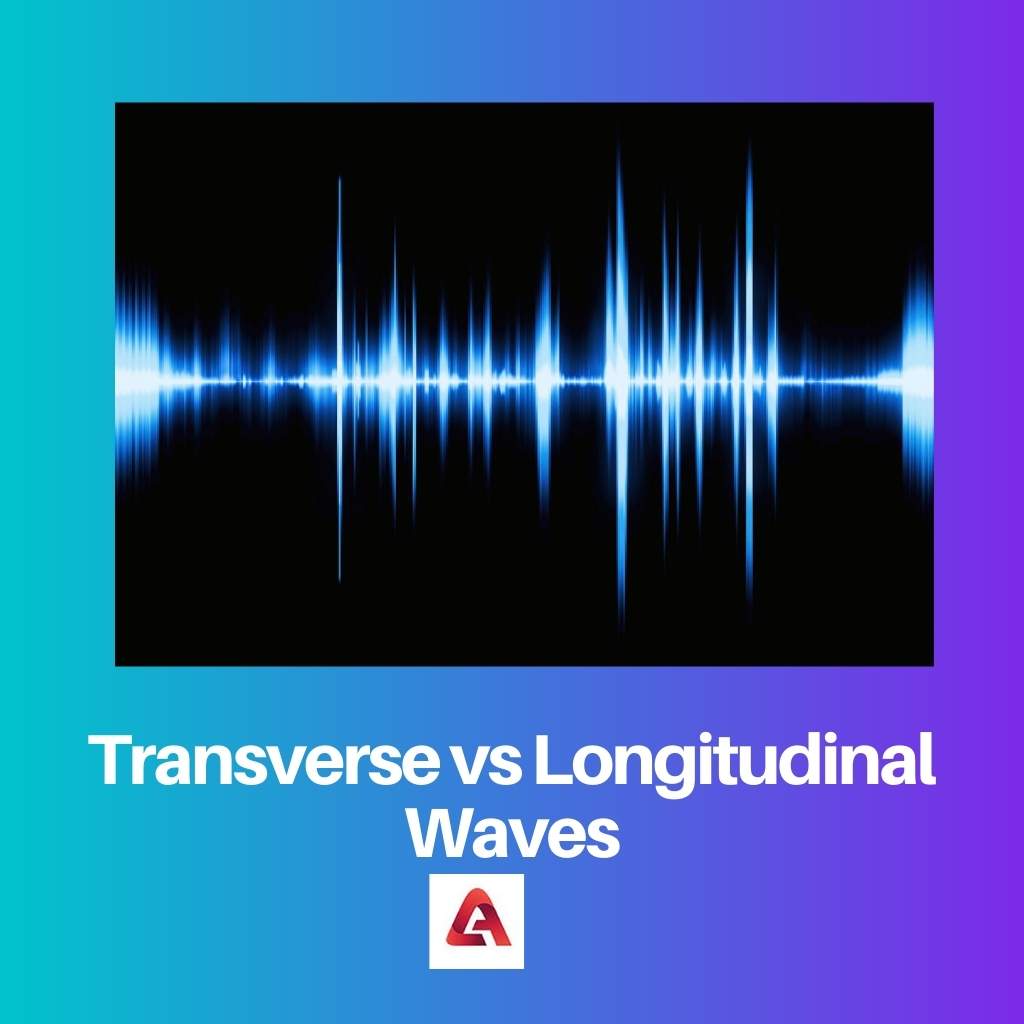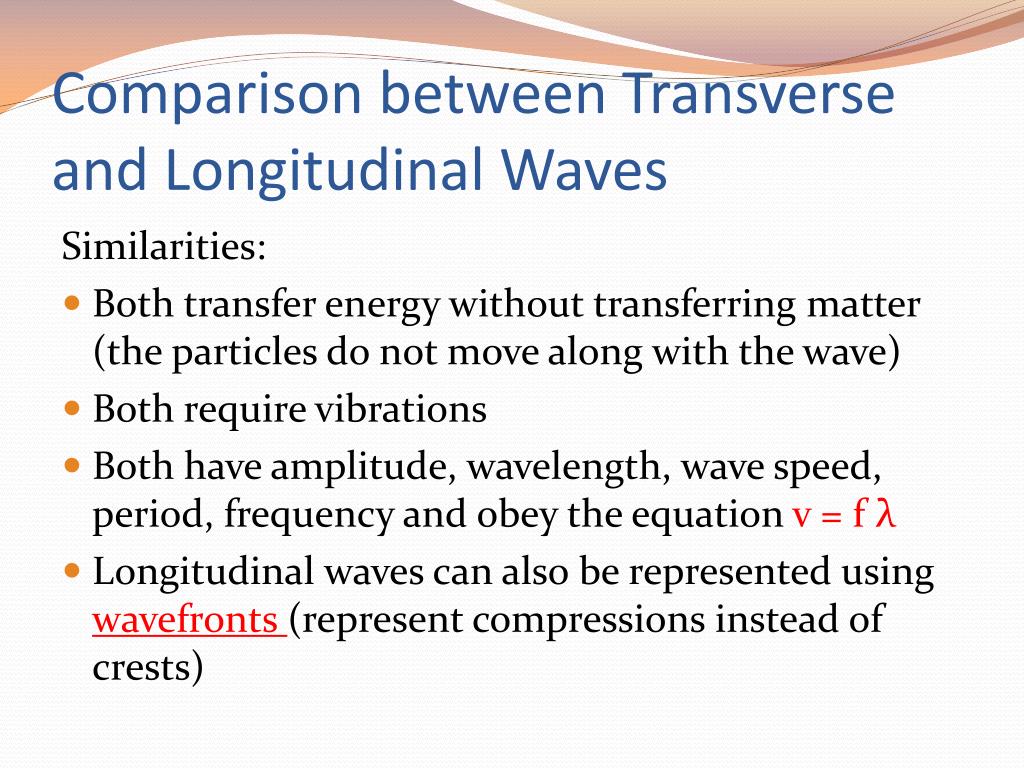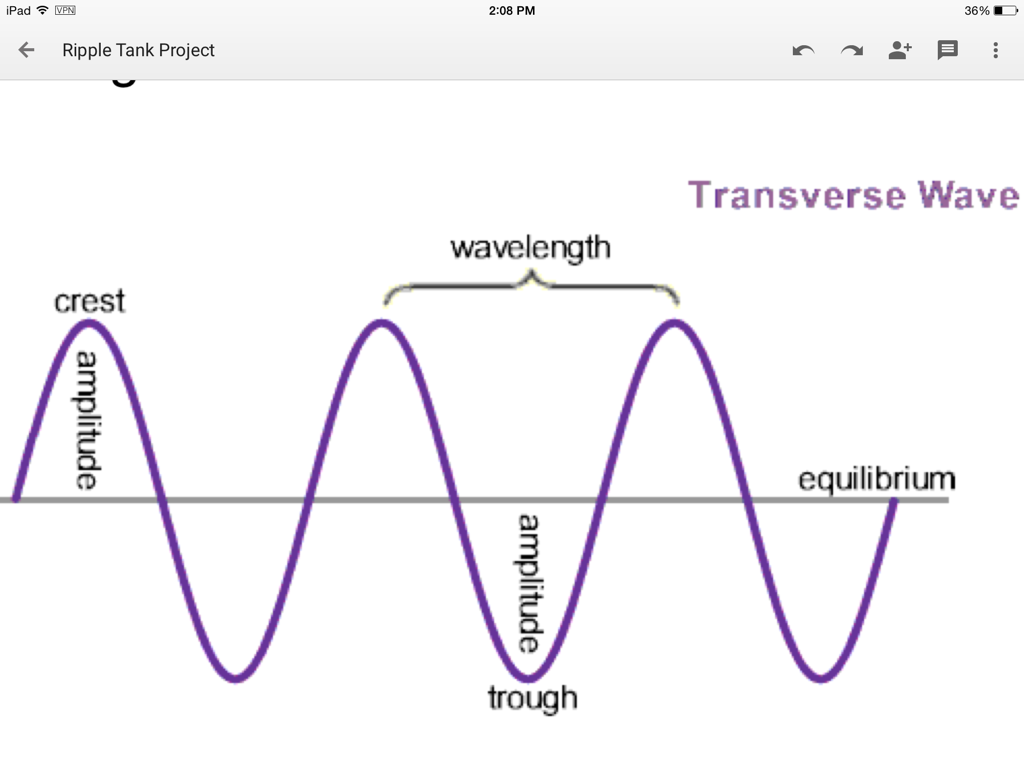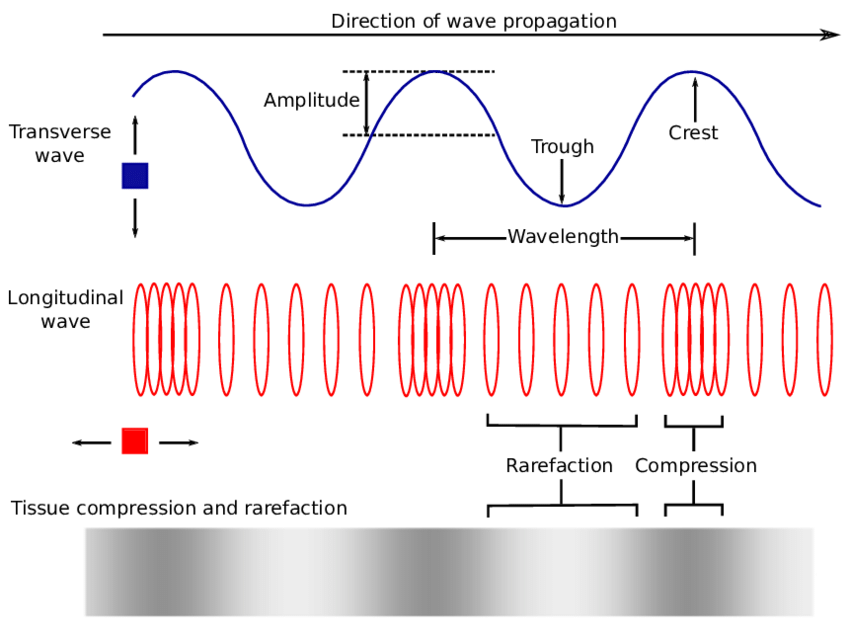
Transverse vs Longitudinal Waves Difference and Comparison
Light is an example of a transverse wave. With regard to transverse waves in matter, the displacement of the medium is perpendicular to the direction of propagation of the wave. A ripple in a pond and a wave on a string are easily visualized as transverse waves. Suggest Corrections. 7.

6 Illustration of a transverse wave and a longitudinal wave Download Scientific Diagram
Waves may be transverse or longitudinal. Electromagnetic waves are transverse waves with a wide range of properties and uses. Sound waves are longitudinal waves.

Transverse Wave and Longitudinal Wave Jennifer Hemmings
Properties of waves - Edexcel Longitudinal and transverse waves. Waves are one way in which energy may be transferred between stores. Both mechanical and electromagnetic waves will transfer energy.

Explainer making waves in science
All the electromagnetic waves - eg light waves, microwaves, radio waves, x-rays. S type earthquake waves. One way of remembering that an S type earthquake wave is a transverse is that an S looks.

Properties of waves and wave cycles. Scalar, transverse, energy and more. Chris Plouffe
There are two types of waves: Longitudinal; Transverse;. Examples of transverse waves include light, water, and Mexican waves! Transverse waves have peaks/crests and troughs. The amplitude of the wave is the distance from the central point to a peak or a trough (the maximum displacement of the wave). The wavelength of the wave (given the.

Transverse And Longitudinal Waves Wavelength And Propagation Speed Periodic Motion MCAT Content
Conclusion. Light waves are an example of transverse waves, because the waves move at a 90-degree angle to the direction in which the energy is traveling. Light waves do not need a medium to transfer energy through—they can travel through vacuums, which is how we get light from the sun and the far-away stars in our universe.

Transverse & Longitudinal Waves Definition, Differences & Examples Embibe
This unit is concerned with describing the properties of harmonic oscillations and wave motion. The first half of the unit covers such topics as resonance, transients, coupled oscillators, transverse and longitudinal waves. The second half looks at interference and diffraction, firstly as important properties of waves in general, and then using.

Frazer does Physics 3.2 Longitudinal and Transverse Waves
A wave is a disturbance that travels or propagates from the place where it was created. Waves transfer energy from one place to another, but they do not necessarily transfer any mass. Light, sound, and waves in the ocean are common examples of waves. Sound and water waves are mechanical waves; meaning, they require a medium to travel through.

Difference between longitudinal and transverse waves Teachoo
In contrast, in longitudinal waves, such as sound waves in a liquid or gas, the displacement of the particles in the oscillation is always in the direction of propagation, so these waves do not exhibit polarization. Transverse waves that exhibit polarization include electromagnetic waves such as light and radio waves, gravitational waves,[6.

PPT Properties of Waves (Part 2) PowerPoint Presentation, free download ID2481020
About the Author. Waves can be divided into two main types: transverse and longitudinal. Transverse waves oscillate perpendicular to the direction of travel; longitudinal waves oscillate parallel to it. There are many examples of each in every day life and some media, like earth and water, can experience both.

Longitudinal and Transverse wave type, vector illustration scientific diagram Physics and
In physics, a transverse wave is a wave that oscillates perpendicularly to the direction of the wave's advance. In contrast, a longitudinal wave travels in the direction of its oscillations. All waves move energy from place to place without transporting the matter in the transmission medium if there is one.

Are Light Waves Transverse or Longitudinal? The Interesting Answer! Optics Mag
Light waves are purely transverse, while sound waves are purely longitudinal. Ocean waves are a peculiar mixture of transverse and longitudinal, with parcels of water moving in elliptical trajectories as waves pass. Light is a form of electromagnetic radiation. The undulations in an electromagnetic wave occur in the electric and magnetic fields.

Waves Part 1
Longitudinal and transverse waves can combine to form what is known as a surface wave. One common example of this combination is the Rayleigh wave. In a Rayleigh wave, particles move in an elliptical or circular motion, combining both the back-and-forth (transverse) and compressional (longitudinal) motions.

Anatomy of a Transverse Wave? YouTube
Metrics. Electromagnetic fields in light waves are mainly transverse to propagation direction but actually also have longitudinal components, which may give rise to unexpected optical phenomena.

Wave, its types and characteristics Online Science Notes
Transverse waves have peaks and troughs. The peak is the crest or top point of the wave, and the trough is the valley or bottom point of the wave. Waves produced in a string are standing waves. Light waves are electromagnetic waves, and all electromagnetic waves are an example of transverse waves. Difference between Longitudinal and Transverse.

Transverse vs Longitudinal Wave Leverage Edu
Many assume that transverse waves only occur on the surface of mediums, like the surface of water, while longitudinal waves are restricted to the interior of materials. Transverse waves can also propagate within a medium, just like light through a glass prism. Similarly, while sound (a longitudinal wave) often travels within a medium like air.